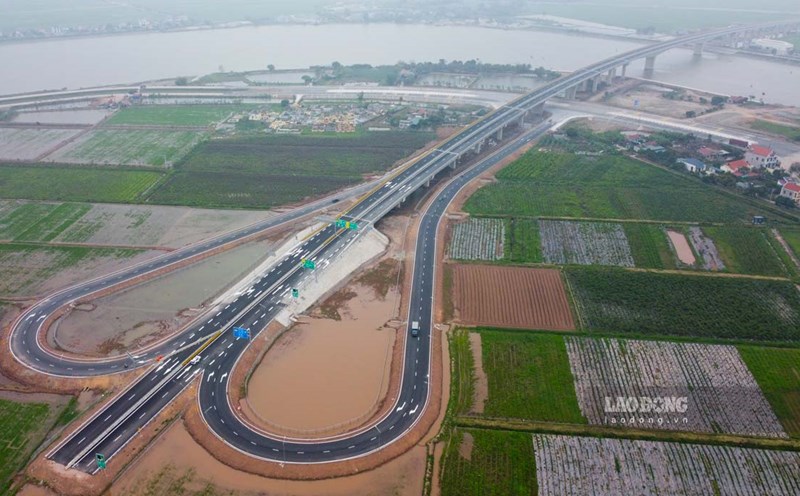Nguyen Quan arranged to meet me on a beautiful, sunny day in early winter at his painting and sculpture gallery for the "Temple of the Mother Goddess" project at the Vietnam Fine Arts Museum. Luckily, it was the day the exhibition ended and we were preparing to pack up, so we had time to sit together at a small cafe right in the museum yard.
Nguyen Quan is still as deaf as before, only his hearing is a bit hard of hearing so he has to talk very loudly, while Nguyen Quan has never been very noisy...
Perhaps it was more than thirty years ago that Nguyen Quan moved to Saigon and started a new life. He was more lonely, working quietly, drawing, sculpting and occasionally participating in exhibitions. It was also a fortunate coincidence that young artist Vu Hong Nguyen, who organized many creative camps and founded the Flamingo Contemporary Art Museum (Dai Lai, Hanoi) - apparently the largest outdoor sculpture park in Southeast Asia - met Nguyen Quan to discuss the project of the Song May Contemporary Art Museum... in the hope that Nguyen Quan would have an "artistic place" in this project space...
But it was not until a few years later, when the COVID-19 pandemic broke out on this small and pitiful earth, including Vietnam, where the most painful and heavily affected place in the country was Ho Chi Minh City, where Nguyen Quan was living with his small family. He said that during those tragic days, he suddenly realized that the idea of composing for the Temple of the Mother Goddess was born and it marked a period of his greatest and most profound creativity...
He believes: "You cannot avoid suffering to be happy. Experiencing, believing in and reverence for the feminine side of the world, that is love, fertility, creativity and the inherent beauty of a human life, a destiny is true happiness". Nguyen Quan believes that "art can help each of us do and achieve this".
With his life experience, broad and profound knowledge, and artistic talent, Nguyen Quan came up with the idea of "chapel". Chapelle (French) or Chapel (English) originally refers to a room or a small place for a group of Catholics to perform rituals, pray or do things related to religious worship. Our ancestors skillfully translated the meaning as chapel.

There are two chapels but the most famous one is associated with the names of two famous painters. Matisse Chapel or Chapelle du Rosaire de Vence in the South of France.
Henri Matisse (1869 - 1954) had a time when he hired a nurse who also acted as his model. She then entered the convent in Vence and became a nun. At her suggestion, H. Matisse also bought a house nearby and spent more than 4 years (1947 - 1951) designing and creating art into a chapel located on the street now named after him. That Chapelle is also known as "The Pilgrim of Art".
Another Chapel is located in Texas (USA) founded by a wealthy American couple. All the paintings and sculptures inside and outside are by the Latvian-American abstract artist and sculptor - Mark Rothko (at that time in the Russian Empire). Matisse Chapel is smaller, only about 90m2, while Rothko Chapel is over 4,000m2, but both artists worked on it during special periods and had unusual fates.
H. Matisse built the chapel while he was suffering from cancer, and M. Rothko (1903 - 1970) committed suicide when the chapel named after him had not yet officially opened...
It is unclear whether Nguyen Quan was inspired by one of the four immortal saints of the ancient spiritual beliefs of the Northern Vietnamese, Mother Lieu Hanh, whose most famous place of worship is Phu Day (Nam Dinh) and the Vietnamese also have other Mother Goddess temples other than the Vietnamese Mother Goddess Religion...
Nguyen Quan said, for him "Mother Temple" is a contemporary public place for artistic and emotional experiences, spirituality... The theme that guides his project is "the veneration of the feminine of the universe and humanity. The feminine is love, fertility and beauty...".
Nguyen Quan spent more than 4 years to carry out this project with 4 "panels of paintings" in oil on canvas. He said: "I relived 4 years with hundreds of authors, tens of thousands of works - most of them anonymous - as a general review of my love, my devotion to the history of human art... When I painted more than 350 of my women every day. I referenced nearly 20,000 images of women in works of art and real photos, extracted things that were compatible with my aesthetic beliefs for the theme in about 100 miniature paintings that will be included in 4 panels of paintings...".
In addition to his paintings, Nguyen Quan has created an architectural and sculptural complex for the Temple of the Mother Goddess. The architecture includes the Moonlit Dry Garden, the Cloud Road, the Nghi Mon Gate, and the Quy Phuong Tower, which is a surreal, symbolic architectural work, and also a large-scale landscape sculpture in the future. The materials of Nguyen Quan's statues are wood, stone, and bronze...
The 4 oil paintings hanging in the Temple are large in size 200x450cm. These 4 panels of paintings were created by Nguyen Quan based on inspiration and contemplation when reading the epic "De dat de nuoc" of the Muong ethnic group - the ancient Vietnamese people. They are probably the most important and beautiful works of art in this "Nguyen Mau Temple" project...
When we parted, he gave me a beautifully printed, large-format book called "The Temple of the Mother Goddess" and thanks to that, I was able to take a closer look at his works. It was even more touching when he respectfully dedicated it with "Thank you for our friendship". I am lucky to have such a friend for more than 40 years and am grateful to him for having published the column "In a noisy place" (a poem by Trang Trinh Nguyen Binh Khiem, whose descendant Nguyen Binh Quan is) for nearly 12 years in the Lao Dong Weekend Newspaper. Nguyen Quan is the only writer who has not missed a single issue...
And like many people who love artistic creation, philosophical thoughts and the spiritual world of human beings, I really hope that one day soon there will be an art space of Nguyen Quan (as he said, certainly in a northern province, Vinh Phuc, Hoa Binh... for example).
* Nguyen Quan (birth name Nguyen Binh Quan) was born in 1948. Studied drawing from a young age with famous painter Nam Son and in Germany (evening class) but was mainly self-taught.
* 1966 - 1971, studied Mathematics and graduated in Cybernetics at Merseburg University, GDR.
* 1977 - 1984, co-founder and Deputy Head of the Department of Art Theory and History, Vietnam University of Fine Arts.
* 1984 - 1989, Secretariat of Vietnam Fine Arts Association, Editor-in-Chief of Fine Arts Magazine.
* 1990 - present, living and working in Ho Chi Minh City.
* Nguyen Quan is the author of 16 books on history and art theory, and is also the translator of several books on literature and art in German.
* Author of thousands of articles in Vietnamese and foreign press.
* Many solo exhibitions at home and abroad.
(Posted on the special edition of Labor Weekend Spring At Ty)











